Let’s travel to the southeastern coast of India where the Bay of Bengal meets the Indian Ocean. Then, it’s off to an extraordinary place called Mahabalipuram(also spelled Mamallapuram), where Hindu stone sanctuaries from the seventh and eighth centuries c.e.dot the shoreline. One of the most remarkable of the monuments is a huge carving (pictured here).Measuring 98 feet long and 49 feet tall, it stretches across the surface of two boulders. This stone relief depicts the dramatic descent of the Ganges River,which, legends tell us, began in the heavens and then flowed gently to earth, thanks to the help of the Hindu deity Shiva.

Following the Crack
Imagine the excitement of the sculptors and their patrons when they saw this untouched rock “canvas” spread out before them 1,400 years ago! They must have been inspired by the crack that separates the two boulders. It probably looked to them like it might be the sort of place where the Ganges River could descend to earth. And, indeed, on the ledge above it, the builders created a cistern for storing water. When that water was released, it ran along the crack to the bottom of the rock wall, creating the impression of a river flowing to earth. The water was released during special ceremonies celebrating the descent of the Ganges River.
As the sculptors began work so many centuries ago, they may have turned their attention first to the fissure, where they carved a naga king descending down the river (above). Nagas, or serpents, are worshiped in India as protectors of rivers, wells, lakes, and seas. They are believed to bring rain, and, in doing so, fertility and prosperity as well. The naga king is depicted as half-human and half-cobra, displaying a hood that rises behind his head like a halo. His serpent wife precedes him down the river as they descend to earth.
هذه القصة مأخوذة من طبعة February 2017 من Dig Into History Magazine for Kids and Teens.
ابدأ النسخة التجريبية المجانية من Magzter GOLD لمدة 7 أيام للوصول إلى آلاف القصص المتميزة المنسقة وأكثر من 9,000 مجلة وصحيفة.
بالفعل مشترك ? تسجيل الدخول
هذه القصة مأخوذة من طبعة February 2017 من Dig Into History Magazine for Kids and Teens.
ابدأ النسخة التجريبية المجانية من Magzter GOLD لمدة 7 أيام للوصول إلى آلاف القصص المتميزة المنسقة وأكثر من 9,000 مجلة وصحيفة.
بالفعل مشترك? تسجيل الدخول

Worshiping Heaven
For almost 500 years, emperors of the Ming and Qing dynasties offered sacrifices and prayers at the Temple of Heaven in Beijing.
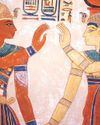
Peace Reigns
The news spread throughout Egypt—a new pharaoh, Ramses III, now sat on the throne.
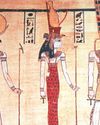
Problems To The East
Ramses III, the second king of Egypt’s 20th Dynasty, is viewed as Egypt’s last truly great pharaoh.
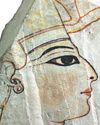
The Successors
Following the death of Ramses III, eight pharaohs, all named Ramses, ruled Egypt.
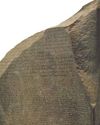
Stone Code
Hundreds of ships, led by the French general Napoleon Bonaparte, sailed from France in May 1798 on a secret mission.

Up & Away!
Eclipse observers often face unexpected difficulties, sometimes on their way to their chosen sites and sometimes at a site itself.

Edison's Eclipse Adventure
Thomas Edison (1847–1931) is the best-known inventor in American history.
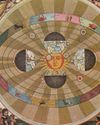
Digging Up Copernicus
The scientist “who made the Earth a planet” is how the Harvard-Smithsonian astronomer Owen Gingerich refers to Nicolaus Copernicus (1473–1543). Copernicus’ path breaking book, On the Revolutions of the Heavenly Spheres,challenged the centuries-old belief that the Earth stood stationary at the center of the cosmos.

Demosthenes & Cicero
Even today, more than 2,000 years after they lived, Demosthenes and Cicero are still considered two of history’s most outstanding orators.

Confucius & Socrates
Some teachers are so inspirational that their influence lives on long after they die.